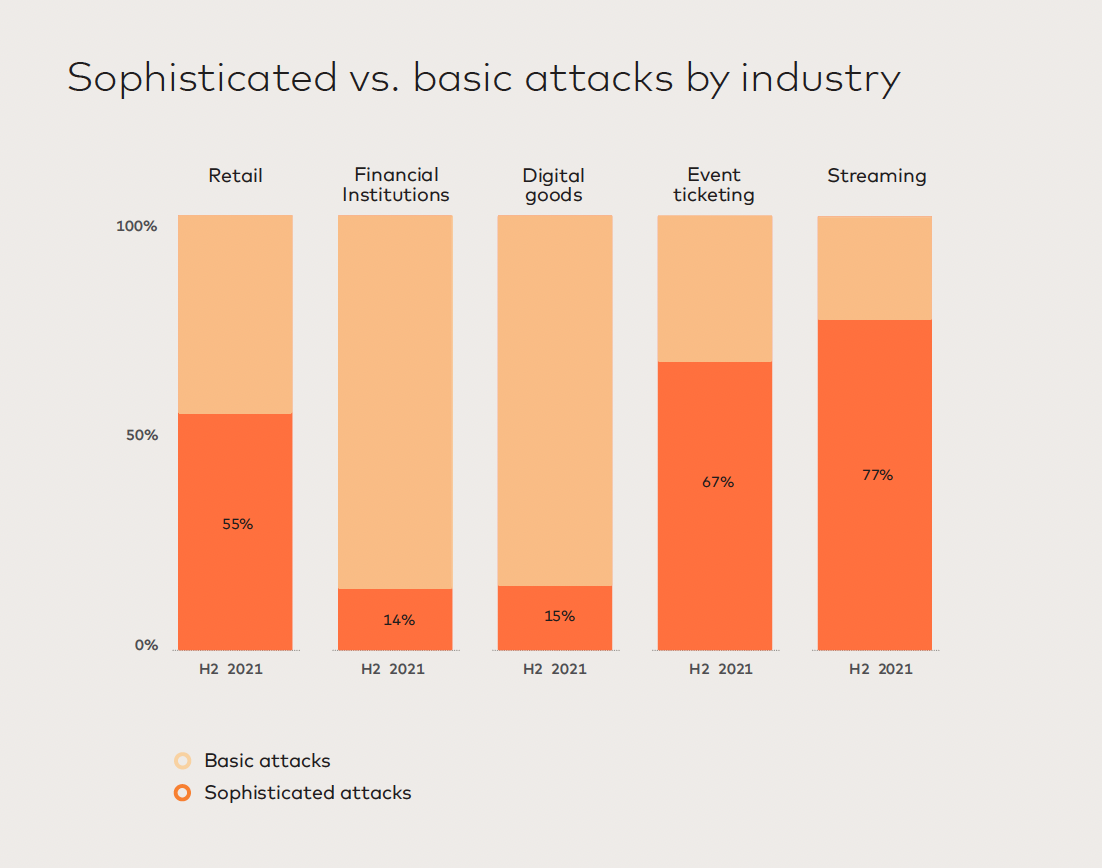3 key takeaways from our Consumer and Risk Report
Cybersecurity professionals have had their work cut out for them during the pandemic.
In the second half of 2021, consumers flocked online to shop for the holidays, communicate with their banks, purchase event tickets, and more. In all of these online interactions, consumers expect both a streamlined user experience and high security standards. But the rapid rise in online traffic has made providing both elements a tall task.
To help businesses navigate these new expectations, our team used insights from our global platform to compile the Consumer and Risk Report. The report details how changes in digital customer experiences manifest in various industries and offers guidance on how companies can provide a seamless user experience while mitigating common cybersecurity risks in 2022 — and beyond.
To help build your knowledge of today’s top cybersecurity threats at all investment levels, here’s a breakdown of the types of fraud we see most often today — and what you can do about them.
Here are three of the report’s most important takeaways.
1. User experience is king (and that won’t change)
Consumers expected smooth digital experiences across all industries based on the data from the second half of 2021. More and more consumers digitized their day-to-day lives, with a 24% year-over-year increase in overall eCommerce traffic and a 12% year-over-year increase in digital banking traffic. For today’s users, the ease of online interactions is vital — more than three-quarters of consumers are more likely to recommend a brand because of the experience.
The challenge is providing an exceptional user experience while also improving online security since many traditional security measures create added friction. For example, adding authentication steps like a two-factor authentication (2FA) prompt or text code can turn trusted users away because it detracts from the user experience.
Achieving the right balance isn’t easy, but deploying device intelligence and collecting behavioral insights can help. These tools reduce friction for trusted users without jeopardizing customer security. More intelligent and layered security measures mean companies no longer have to choose…



